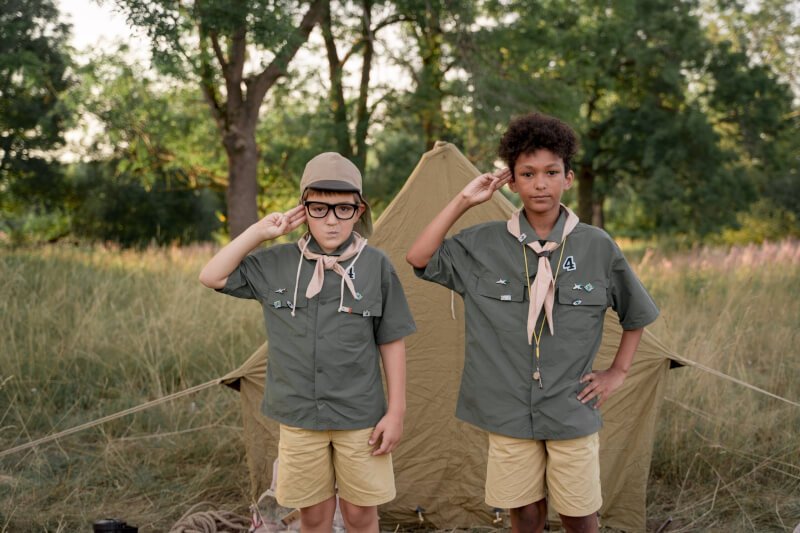Are you ready to embark on an unforgettable outdoor experience? Look no further than “The Ultimate Camping Adventure: A Beginner’s Guide.” This article will provide you with all the essential information you need to know to make your first camping trip a resounding success. With helpful tips and advice, you’ll learn how to pick the perfect campsite, set up your tent like a pro, and even master the art of building a cozy campfire. Get ready to immerse yourself in nature, connect with loved ones, and create lasting memories under the stars.
Choosing the Right Camping Gear
Selecting a Tent
When it comes to choosing a tent for your camping adventure, there are a few key factors to consider. First, determine how many people will be staying in the tent. This will help you determine the size and capacity you need. It’s important to have enough space for everyone to sleep comfortably. Additionally, consider the weather conditions you’ll be camping in. If you expect rain or wind, look for a tent with a sturdy construction and waterproof materials. Finally, consider the ease of setup and portability. Look for a tent that is quick and easy to set up, and also lightweight for easy transportation.
Sleeping Bags and Sleeping Pads
A good night’s sleep is crucial for an enjoyable camping experience. When selecting a sleeping bag, consider the temperature rating. If you’ll be camping in colder conditions, choose a bag with a lower temperature rating to keep you warm. For warmer climates, a bag with a higher temperature rating will provide sufficient comfort. Additionally, consider the material and insulation of the sleeping bag. Synthetic materials offer better insulation and moisture resistance, while down insulation provides excellent warmth. Pair your sleeping bag with a sleeping pad to provide insulation from the cold ground and add an extra layer of comfort.
Campground Essentials
Before heading out on your camping trip, make sure you have all the essential items to ensure a smooth and enjoyable experience. Some essential campground items include a camping stove for cooking meals, a cooler to keep your food and beverages chilled, a lantern or flashlight for lighting at night, and a camp chair or portable seating for relaxation. Other items to consider include a camping table for preparing meals or playing games, a first aid kit for any minor injuries, and insect repellent to keep pesky bugs at bay.
Cooking Equipment
One of the highlights of camping is enjoying delicious meals cooked in the great outdoors. When selecting cooking equipment, consider your cooking preferences and the type of meals you plan to prepare. A portable camping stove is a versatile option that allows you to cook a variety of dishes. Look for one that is lightweight and has adjustable heat settings. Additionally, consider the cookware you’ll need, such as pots, pans, and utensils. Opt for durable, non-stick materials for easy cooking and cleaning. Don’t forget to pack essentials like a cutting board, knife, and can opener.
Clothing and Footwear
When it comes to camping, it’s important to dress appropriately for the outdoors. Choose clothing made of moisture-wicking and quick-drying materials to keep you comfortable and dry. Layering is key to adjust to changing weather conditions. Pack lightweight, breathable shirts, pants, and shorts for daytime activities, along with warmer layers for cooler nights. Don’t forget to pack a waterproof jacket or poncho in case of rain. As for footwear, opt for sturdy hiking boots or trail shoes for comfort and protection. Don’t forget to pack extra socks to keep your feet dry and blister-free.
Planning and Preparing for the Trip
Researching and Selecting a Campsite
Before embarking on your camping adventure, take the time to research and select the perfect campsite. Consider factors such as proximity to natural attractions, availability of amenities like restrooms and showers, and the overall scenery. Take into account the activities you might want to do, such as hiking or fishing, and choose a campsite that offers those opportunities. Additionally, check for any reservation requirements or permits needed, and make sure to book your campsite in advance to secure your spot.
Checking Weather Conditions
Always check the weather forecast for your camping destination before heading out. Knowing the expected weather conditions will help you pack appropriate clothing, gear, and supplies. Prepare for both hot and cold weather scenarios, and be aware of any potential storms or extreme conditions. It’s also a good idea to monitor weather updates during your camping trip to stay informed about any sudden changes in conditions.
Creating a Checklist
Creating a checklist is an essential part of preparing for a camping trip. It ensures that you have all the necessary items and helps you stay organized. Start by listing all the camping gear you’ll need, including tents, sleeping bags, cooking equipment, and clothing. Then, add any personal items specific to your needs, such as medication or toiletries. Don’t forget to include food and water supplies, as well as any recreational items like hiking gear or fishing equipment. Having a checklist will help you remember everything you need, reducing the chance of forgetting important items.
Packing Efficiently
When it comes to packing for your camping trip, efficiency is key. Start by organizing your gear into different categories, such as camping essentials, cooking equipment, and personal items. Use separate bags or containers for each category to keep things organized and easily accessible. Pack items that you’ll need throughout the day near the top of your bag for easy access. Don’t forget to pack lighter and frequently used items closer to the top as well. Utilize any available space efficiently, and consider using compression bags or packing cubes to maximize space in your backpack or vehicle.
Food and Water Planning
Proper food and water planning is essential for any camping trip. Plan your meals in advance and create a shopping list accordingly. Opt for non-perishable items that are easy to prepare and require minimal cooking, such as canned foods, dehydrated meals, and snacks. Don’t forget to pack plenty of water or water purification methods if you don’t have access to clean water at your campsite. Consider any dietary restrictions or allergies of your camping companions when planning meals, and make sure to store food properly to avoid attracting wildlife.
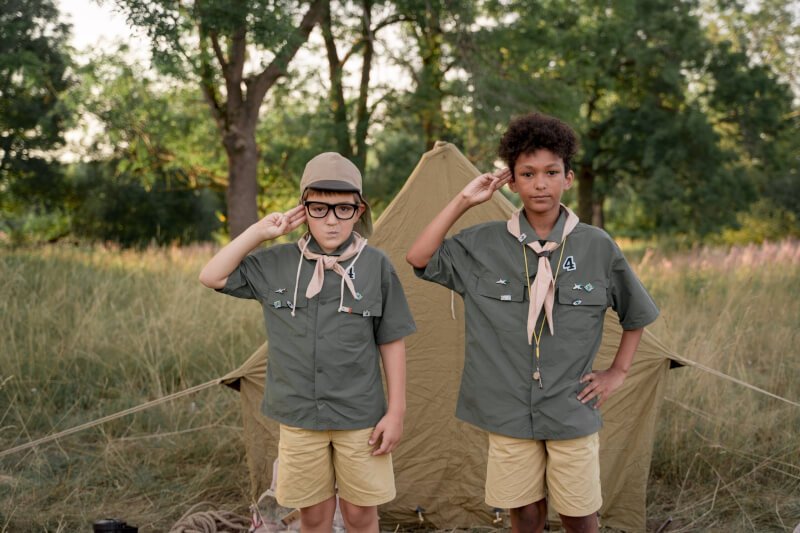
Setting Up Camp
Choosing a Campsite
Choosing the right campsite can greatly enhance your camping experience. Look for a flat and level area that is free from rocks, tree roots, or other obstacles that may affect your comfort. Consider the proximity to natural features such as rivers, lakes, or mountains for added scenic beauty. Pay attention to any potential safety hazards, such as dead trees or rocky cliffs. Take into account the availability of shade and privacy, as well as the distance to amenities like restrooms and water sources. Finally, always follow campground regulations and guidelines when selecting a campsite.
Pitching the Tent
Once you’ve chosen your campsite, it’s time to pitch your tent. Before setting up, clear the area of any debris or sharp objects that may damage the tent floor. Lay down a groundsheet or footprint to provide an extra layer of protection. Carefully unpack your tent and lay it out flat. Follow the instructions provided by the manufacturer to assemble the poles and attach them to the tent body. Start by staking out the corners of the tent and then work your way around, making sure the tent is taut. Check for any wrinkles or gaps to ensure a proper setup.
Organizing Campsite Layout
Organizing your campsite layout can make a significant difference in your camping experience. Start by setting up designated areas for cooking, sleeping, and relaxation. Place your tent in a central location, ensuring easy access to other areas. Set up your cooking area away from the tent to prevent any food odors from attracting wildlife. Create a comfortable seating area using camp chairs or a picnic blanket. Consider the flow of traffic and make sure there is enough space for everyone to move around comfortably. Keep in mind that organization and cleanliness are important to minimize the risk of accidents and keep wildlife away.
Setting Up Sleeping Area
After pitching your tent, it’s time to set up your sleeping area. Lay down your sleeping pads to provide insulation and cushioning from the ground. Make sure the pads are properly inflated and positioned to offer maximum comfort. Next, set up your sleeping bags or blankets. Fluff them up to create an inviting sleeping surface. Consider using a pillow or rolled-up clothing for added head and neck support. Keep personal items like clothes, books, or electronics within reach but away from anyone’s sleeping space. A well-organized and cozy sleeping area will ensure a restful night’s sleep.
Creating a Cooking Area
Having a well-equipped cooking area is essential for preparing delicious meals while camping. Start by setting up your camping stove on a stable and flat surface. Ensure proper ventilation and keep flammable objects away from the stove. Set up a folding table or use a designated area for food preparation. Have all your cookware, utensils, and ingredients organized and easily accessible. Consider hanging a mesh food storage bag or using a bear-resistant container to keep your food safe from wildlife. Keep a fire extinguisher or a bucket of water nearby for any emergencies. Clean up regularly to maintain a hygienic cooking area.
Campfire Dos and Don’ts
Fire Safety Regulations
Campfires are a beloved part of camping, but it’s important to follow fire safety regulations to prevent accidents and protect the environment. Always check with the campground or local authorities for any specific rules or restrictions regarding campfires. Some areas may prohibit campfires during dry seasons or have designated fire rings or pits. Make sure you have a source of water nearby to extinguish the fire if needed. Never leave a campfire unattended and never start a fire on a windy day. Always follow “leave no trace” principles when it comes to campfires, ensuring you leave the area as you found it.
Building a Campfire
If campfires are allowed, building one can add warmth and ambiance to your camping experience. Start by selecting a safe location, away from flammable materials like tents or overhanging tree branches. Clear a space, removing any leaves, grass, or debris to create a fire pit. Gather dry wood in different sizes, such as tinder, kindling, and fuel wood for a sustainable fire. Use fire starters or matches to ignite the tinder, slowly adding kindling and fuel wood as the fire grows. Maintain a safe distance and always keep a source of water nearby to control the fire.
Campfire Cooking Tips
Cooking over a campfire can be a fun and delicious experience. Make sure you have the proper equipment, such as a cast iron skillet or grill grate, to cook your meals safely. Use long-handled utensils to prevent burns and keep a close eye on the food to avoid overcooking or burning. Opt for foil-wrapped recipes or use a Dutch oven for slow cooking. Adjust the heat by adding or removing wood as needed. After cooking, extinguish the fire completely and allow it to cool before disposing of the ashes. Remember to always follow food safety guidelines and cook meats to the proper internal temperature.
Extinguishing a Campfire
When it’s time to extinguish your campfire, follow these steps to ensure it is completely out and safe to leave unattended. Start by slowly pouring water over the fire, focusing on the base and any remaining embers. Stir the ashes and water mixture with a shovel or stick to disperse the water evenly. Continue adding water and stirring until the hissing sound stops. Feel the ashes and embers with the back of your hand to ensure they are cool to the touch. Once the fire is completely out, cover the ashes with dirt or sand to prevent any potential reignition. Remember, never leave a campfire unattended until it is completely extinguished.
Leave No Trace Principles
The Leave No Trace principles are guidelines to ensure that the wilderness is preserved and protected for future generations. Follow these principles to minimize your impact while camping. Plan ahead and prepare by researching the specific regulations and rules of your camping area. Camp on durable surfaces, such as established campsites, to avoid damaging fragile vegetation. Dispose of waste properly by packing out all trash and using designated restroom facilities. Leave what you find and avoid disturbing natural features or artifacts. Finally, minimize campfire impacts by following fire safety guidelines and leaving the area clean and free of debris.
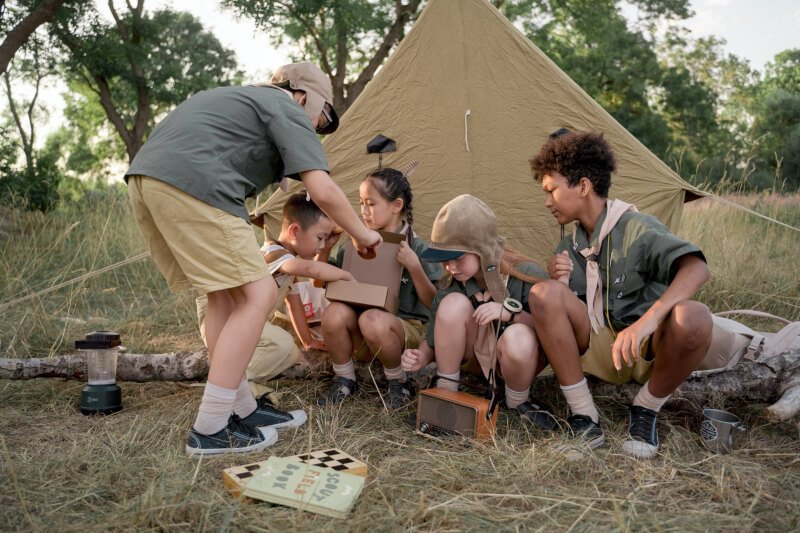
Outdoor Cooking Tips and Recipes
Choosing the Right Cooking Method
When it comes to outdoor cooking, there are several methods to choose from depending on your preference and available resources. For campfire cooking, consider using a lightweight camping stove or grill grate for ease of use. If you prefer a more traditional approach, cooking directly over the campfire using cast iron cookware can provide a unique flavor. Dutch ovens are also a versatile option for slow cooking and baking. For a quick and easy meal, consider using foil packets to grill or steam a variety of ingredients. Choose the cooking method that suits your needs, cooking skills, and the type of meals you plan to prepare.
Cooking Equipment and Utensils
Having the right cooking equipment and utensils can greatly enhance your outdoor cooking experience. Start with a reliable camping stove that is suitable for your cooking needs. Consider the size and weight of the stove for portability. Pack sturdy and lightweight cookware that is easy to clean, such as stainless steel or aluminum pots and pans. Don’t forget to pack essential utensils like spatulas, tongs, and a can opener. Consider using long-handled utensils to prevent burns when cooking over an open flame. Invest in a good-quality knife for food preparation and a cutting board for easy meal prep.
Campfire Cooking Recipes
Campfire cooking offers a wide range of delicious meals that can be prepared with minimal ingredients and equipment. For a hearty breakfast, consider making a one-pot scrambled eggs and sausage skillet. Simply cook the sausage in a skillet, add beaten eggs, and stir until cooked through. For lunch or dinner, try a foil packet meal with chicken, vegetables, and your choice of seasonings. Seal the ingredients in foil, grill over the campfire, and enjoy a flavorful and easy meal. For a tasty dessert, wrap sliced apples with cinnamon, sugar, and butter in foil, and cook until soft and caramelized. The possibilities for campfire cooking are endless!
Meal Planning and Food Storage
Proper meal planning and food storage are crucial for a successful camping trip. Plan your meals in advance, considering the number of days and people you’ll be camping with. Choose meals that can be easily prepared with minimal cooking equipment and ingredients. Opt for non-perishable items like canned goods, dry pasta, and dehydrated meals to minimize the need for refrigeration. Divide your meals into individual portions to ensure everyone gets their fair share. Utilize coolers or food storage containers with ice packs for perishable items like meat and dairy products. Keep everything organized and easily accessible to make meal preparation more efficient.
Campfire Safety Measures
When cooking over a campfire, it’s important to prioritize safety to prevent accidents and injuries. Always have a source of water or fire extinguisher nearby to control any potential fires. Set up a safe cooking area away from flammable materials like tents or trees. Keep children and pets at a safe distance from the fire. Never leave the campfire unattended while cooking. Ensure that any hot cooking surfaces or utensils are handled with care, using oven mitts or heat-resistant gloves. Lastly, always follow proper food safety guidelines and cook meats to the appropriate internal temperature.
Exploring the Wilderness
Hiking Essentials
Exploring the wilderness through hiking provides an opportunity to experience nature up close. Before heading out on a hike, make sure you have the essential items to keep you safe and comfortable. These include a well-fitting backpack, sturdy hiking boots or shoes, a map and compass or GPS device, a first aid kit, a whistle, and a headlamp or flashlight. Additionally, pack enough food and water for the duration of your hike, as well as extra layers of clothing for changing weather conditions. Don’t forget to bring a camera or binoculars to capture the stunning scenery or spot wildlife along the way.
Navigating and Using a Map
When exploring the wilderness, it’s important to have basic navigation skills and know how to use a map. Familiarize yourself with the topography and features of the area you’ll be hiking in. Use a detailed map that includes contour lines, trails, and landmarks. Learn how to read a map and understand the symbols and legends. Practice orienteering skills, such as using a compass to determine direction and triangulating your position. Always carry a map and compass as a backup, even if you rely on a GPS device. Navigation skills are essential for staying on track and avoiding getting lost in unfamiliar terrain.
Identifying Plants and Wildlife
Part of the joy of camping and hiking is observing the diverse plant and wildlife that inhabit the wilderness. Take the time to educate yourself about the plants and animals you may encounter. Learn to identify common plants, trees, and flowers, as well as any potential hazardous or poisonous species. Observe wildlife from a safe distance and avoid disturbing their natural habitats. Respect their space and never feed or approach wild animals. Keep in mind that some areas may be home to larger animals like bears or mountain lions, so it’s important to know how to respond if you encounter them.
Leave No Trace Principles
When exploring the wilderness, it’s essential to follow the Leave No Trace principles to minimize your impact on the environment. This includes planning ahead and preparing by researching regulations and camping responsibly. Travel and camp on durable surfaces, such as established trails and campsites, to avoid trampling or damaging fragile vegetation. Dispose of waste properly by packing out all trash, including food scraps and toilet paper. Leave what you find and avoid collecting natural items like rocks or flowers. Finally, minimize campfire impacts by following fire safety guidelines and leaving the area clean and free from debris.
Safety Precautions in the Wilderness
When venturing into the wilderness, it’s important to take safety precautions to ensure a safe and enjoyable experience. Always inform someone about your plans, including your expected route and return time. Carry a well-stocked first aid kit and know how to use it. Be aware of your surroundings and watch out for hazards such as loose rocks, slippery surfaces, or unstable terrain. Stay hydrated and well-nourished throughout your hike, and take regular breaks to rest and refuel. Finally, be mindful of your physical limitations and know when to turn back or seek help if needed. Personal safety should always be a priority in the great outdoors.
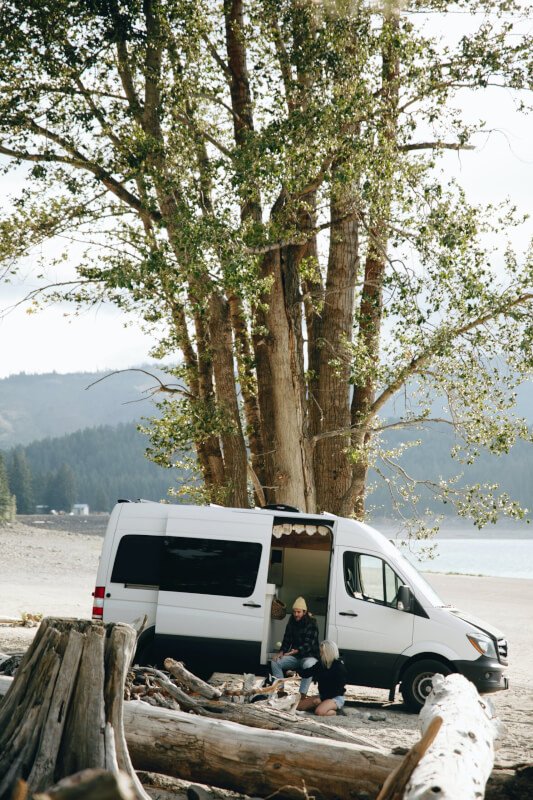
Staying Safe in the Great Outdoors
First Aid Kit and Safety Supplies
Having a well-stocked first aid kit is essential for any outdoor adventure. It should include basic supplies such as adhesive bandages, gauze pads, adhesive tape, antiseptic solution, and over-the-counter pain relievers. Consider adding items specific to your needs, such as allergy medications, blister treatments, or prescription medications. Familiarize yourself with the contents of your first aid kit and how to use them properly. Additionally, pack other safety supplies such as a whistle, emergency blanket, multi-tool, and a signaling device. Having these essentials will ensure you are prepared for any minor injuries or emergencies that may arise.
Wildlife Safety Tips
While encountering wildlife can be an exciting part of camping, it’s important to remember that they are wild animals and should be treated with respect. Educate yourself about the local wildlife and their behavior. Keep a safe distance and never approach or feed wild animals. Store food and scented items securely to prevent attracting wildlife to your campsite. If you encounter a potentially dangerous animal such as a bear, mountain lion, or moose, stay calm and slowly back away without turning your back on the animal. Follow any specific guidelines or recommendations from local authorities to ensure your safety.
Emergency Preparedness
When venturing into the great outdoors, it’s crucial to be prepared for emergencies. Research the specific risks and hazards associated with your camping location, such as severe weather or natural disasters. Create an emergency plan that includes communication methods, meeting points, and procedures to follow in case of an emergency. Familiarize yourself with local emergency services and their contact information. Carry a fully charged cell phone and consider investing in a portable charger or satellite phone for remote areas. Finally, ensure you have the necessary skills and knowledge to administer basic first aid and respond to common outdoor emergencies.
Survival Skills
Having basic survival skills is essential in case of unexpected emergencies or situations while camping. Learn how to build emergency shelters using natural materials to protect yourself from the elements. Familiarize yourself with basic navigation techniques, such as using a compass or natural landmarks to find your way. Learn how to start a fire using different methods, including friction or flint and steel. Practice signaling techniques, such as using a whistle or mirror to attract attention. Finally, learn how to find and purify water from natural sources. Having these survival skills can make a significant difference in your ability to handle unexpected situations.
Knowing Your Limits
It’s important to know your physical limits and abilities when engaging in outdoor activities. Be realistic about your fitness level and choose activities that are suitable for your capabilities. Start with shorter hikes or less strenuous activities if you are a beginner. Gradually increase the difficulty and duration as you gain experience and confidence. Be aware of signs of fatigue or exhaustion and take breaks when needed. Listen to your body and don’t push yourself beyond your limits. Always prioritize your safety and well-being to ensure an enjoyable and injury-free camping experience.
Tips for a Comfortable Night’s Sleep
Choosing the Right Sleeping Bag
A good night’s sleep is essential for an enjoyable camping trip. When choosing a sleeping bag, consider the temperature rating that matches the expected weather conditions. A lower temperature rating is suitable for colder climates, while a higher rating is ideal for warmer weather. Additionally, consider the insulation type and material. Down insulation offers excellent warmth-to-weight ratio, while synthetic insulation performs better in wet conditions. Choose a sleeping bag that matches your body size and sleeping preferences. Consider the shape, weight, and packability to ensure easy transportation and storage.
Utilizing Sleeping Pads
Sleeping pads are an important component of a comfortable sleeping area. They provide insulation from the cold ground and add cushioning for a more restful sleep. There are different types of sleeping pads available, such as closed-cell foam pads, self-inflating pads, and air mattresses. Closed-cell foam pads are lightweight and durable, while self-inflating pads offer a good balance between comfort and portability. Air mattresses provide the most cushioning but may require a pump for inflation. Choose a sleeping pad that suits your needs and preferences, and consider factors such as weight, insulation, and thickness.
Setting Up a Cozy Sleeping Area
Creating a cozy sleeping area can greatly enhance your comfort while camping. Start by clearing the ground of any rocks, sticks, or other debris that may affect your sleeping surface. Lay down a groundsheet or footprint to provide an extra layer of protection. Set up your sleeping pad and fluff it up to maximize cushioning and comfort. Arrange your sleeping bag or blankets, making sure they are properly positioned and zipped up for warmth. Utilize extra layers such as a fleece or down jacket for added insulation on colder nights. Keep personal items like a flashlight or water bottle within reach for convenience.
Campsite Noise Reduction
Campsites can sometimes be noisy, especially if they are located near popular attractions or social areas. To minimize the impact of noise on your sleep, choose a campsite away from high-traffic areas or large groups. Pitch your tent farther away from common gathering areas such as restrooms or picnic tables. Use earplugs or noise-canceling headphones to block out any unwanted sounds. Consider using a white noise machine or a smartphone app that plays calming nature sounds to create a soothing environment. A peaceful and quiet sleep environment will ensure you wake up refreshed and ready for the day’s activities.
Tips for Staying Warm
Staying warm during cold nights is crucial for a comfortable camping experience. Start by wearing warm and dry clothing to retain body heat. Layer your clothing to trap warm air between the layers. Use a hat or beanie to prevent heat loss through your head. Consider using hand warmers or heated blankets for added warmth. Before going to bed, do some light exercises or jump around to generate body heat. Use a hot water bottle or a well-sealed water bottle filled with warm water to warm up your sleeping bag before getting in. Finally, make sure your sleeping bag is properly rated for the expected temperatures and consider using a liner for extra insulation.
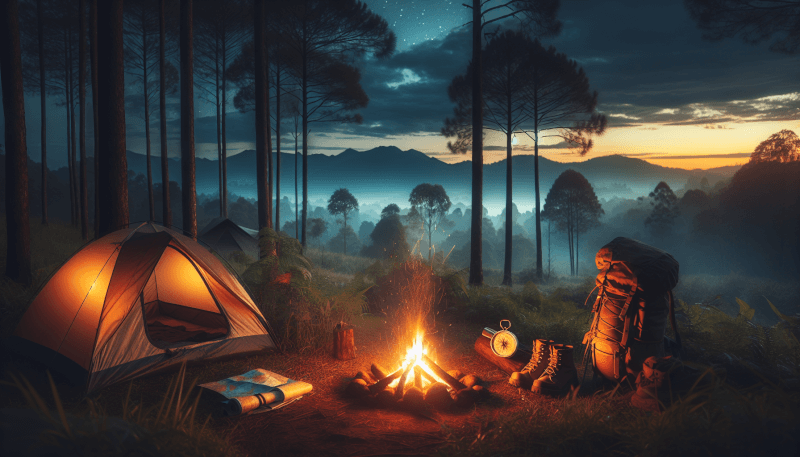
Leave No Trace Principles
Plan Ahead and Prepare
Planning ahead and preparing for your camping trip is crucial to minimize your impact on the environment. Research the specific regulations and guidelines of your camping area, including any permit requirements or fire restrictions. Familiarize yourself with the local flora and fauna, and plan your activities accordingly. Prepare a detailed packing list to ensure you have all the necessary supplies and equipment. Consider the needs of your group, including safety, comfort, and dietary requirements. By planning ahead, you can reduce the chance of environmentally harmful actions and ensure a responsible camping experience.
Travel and Camp on Durable Surfaces
When camping, it’s important to choose durable surfaces to minimize your impact on the environment. Opt for established campsites or camping areas designated by park authorities. Use existing trails and avoid creating new paths that may disrupt natural habitats or cause erosion. Avoid camping directly on vegetation or fragile areas to prevent damage. When setting up tents or other equipment, position them on bare ground or designated tent pads. Choose areas that have already been impacted by human activity to minimize your overall impact on the environment.
Dispose of Waste Properly
Proper waste disposal is crucial for maintaining the cleanliness and integrity of the natural environment. When camping, always pack out all trash, including food scraps and packaging materials. Never leave trash or litter behind, as it can harm wildlife and disrupt ecosystems. Use designated waste disposal areas or carry a portable trash bag to collect your waste until it can be properly disposed of. If nature calls, make sure to use designated restroom facilities or dig a small hole at least 6-8 inches deep and cover it properly. Proper waste disposal ensures that the wilderness remains pristine and beautiful for future generations.
Leave What You Find
Appreciating the beauty of the natural environment is an important part of camping. When exploring, leave natural features, plants, rocks, and artifacts as you found them. Avoid picking flowers or plants and resist the urge to take souvenirs from the wilderness. Even seemingly harmless actions like collecting rocks or shells can have a negative impact on fragile ecosystems. By leaving nature untouched, you contribute to the preservation and conservation of the environment, allowing others to enjoy its beauty and significance in its natural state.
Minimize Campfire Impacts
Campfires can be a great way to gather around, cook meals, and enjoy the ambiance of the outdoors. However, it’s important to minimize the impact of campfires on the environment. Follow established fire regulations and only build fires in designated fire rings or pits. Use small, dead, and downed wood as fuel, and avoid cutting live trees or damaging vegetation. Always extinguish your campfire completely before leaving the area or going to bed. Disperse the ashes and ensure they are cool to the touch. By practicing responsible campfire use, you can prevent wildfires, protect natural resources, and leave the area as you found it.
Enjoying the Outdoors Responsibly
Respecting Wildlife
When camping, it’s important to respect and appreciate the wildlife that inhabits the area. Observe wildlife from a safe distance and avoid approaching or feeding them. Never attempt to touch or interact with wild animals, as it can be dangerous for both the animal and yourself. Keep food and scented items securely stored to prevent attracting wildlife to your campsite. Admire wildlife from afar and leave their natural habitats undisturbed. By respecting wildlife and their natural behaviors, you ensure their safety and contribute to the preservation of their ecosystems.
Respecting Other Campers
Camping often means sharing campground spaces with other outdoor enthusiasts. It’s important to be respectful of other campers and their experience. Keep noise levels to a minimum, especially during quiet hours specified by the campground. Avoid encroaching on neighboring campsites or walking through occupied areas. Follow campground rules and guidelines, including proper waste disposal and campfire regulations. Be mindful of your actions and strive to create a positive and inclusive camping environment for everyone to enjoy.
Being Mindful of Noise
Camping is a great opportunity to connect with nature and enjoy the serenity of the outdoors. Being mindful of noise is important to maintain a peaceful and harmonious camping experience. Avoid playing loud music or using loud outdoor equipment that may disturb other campers. Keep conversations and activities at a considerate volume, especially during quiet hours. Use headphones or noise-canceling devices when listening to music or watching movies. Being mindful of noise ensures that everyone can enjoy the tranquility and beauty of the natural environment.
Pack It In, Pack It Out
One of the most important principles of responsible camping is to “pack it in, pack it out.” This means that whatever you bring into the campground or wilderness, you should take out with you. This includes trash, food scraps, and any other items that could potentially harm the environment or wildlife. Always carry a designated trash bag and dispose of it properly in designated waste receptacles. If trash facilities are not available, securely pack all waste and dispose of it in appropriate bins or dumpsters when you return home. Pack it in, pack it out is a simple yet effective way to minimize your impact on the environment and contribute to its conservation.
Protecting Natural Resources
Being conscious of your impact on natural resources is crucial when camping. Follow guidelines and regulations set by park authorities or campground operators to ensure sustainable use of resources. Use water sparingly and avoid disposing of any waste, including soaps or chemicals, into natural water sources. Avoid damaging vegetation or disturbing wildlife habitats. Stay on designated trails and paths to prevent soil erosion and protect delicate plant life. By respecting and protecting natural resources, you play a vital role in the conservation and preservation of the environment for future generations to enjoy.
In conclusion, choosing the right camping gear, planning and preparing for the trip, setting up camp properly, observing campfire safety, exploring the wilderness responsibly, staying safe in the great outdoors, ensuring a comfortable night’s sleep, following the Leave No Trace principles, and enjoying the outdoors responsibly are all crucial elements to consider for a successful camping adventure. By following these guidelines and incorporating them into your camping experience, you can have a memorable and enjoyable time in the great outdoors while minimizing your impact on the environment. Happy camping!


